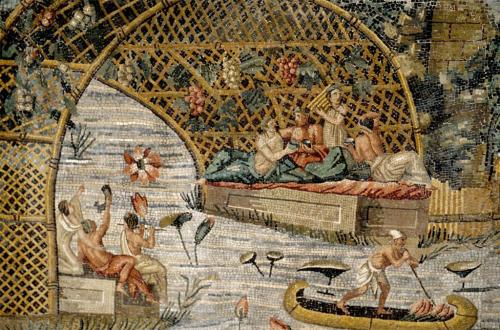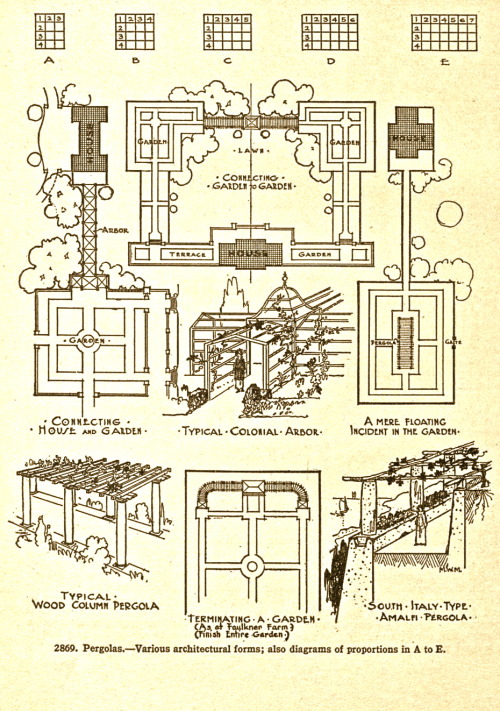The Pergola is Ancient History Above, the pergola as depicted in The Nile Mosaic of Palestrina (sect
The Pergola is Ancient History Above, the pergola as depicted in The Nile Mosaic of Palestrina (section 19). A rounded pergola acted as a training system for growing grapes by the ancient Egyptians. (Based upon the research of Gullini and Fasolo in 1953, this mosaic was built shortly after the middle of the second century, B.C.) The word pergola is from the Latin word “pergula,” meaning a projecting roof or vine arbor. The Italian word “pergola” refers to a grape left on its trellis for the winter. Modern-day use of the word pergola is often used to describe a garden structure for either decorative purposes, or for training plants. A pergola is generally a flat-topped wooden structure with a semi-open roof, while an arbor may be more of a skeletonized structure or tunnel made from materials other than wood. The pergola is one of the oldest styles of garden architecture still in use today. Ancient Egyptians used them to grow vines that covered open walkways and created relief from the sun when walking between buildings, while also providing a support structure for the grape vines. The illustration shows some modern-day pergola designs, as indicated in The Standard Cyclopedia of Horticulture (1919), Vol. 5. -- source link
Tumblr Blog : wallacegardens.tumblr.com
#egyptian#pergola#garden structure#architecture#mosaic#ancient history#history#illustration#botanical illustration#design#gardening#etymology#horticulture

